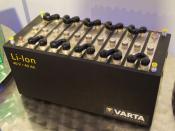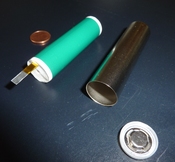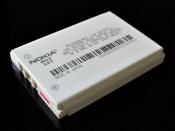From Corded to Cordless.
From the construction site to the home, the electric drill is a commonly used tool in todayÃÂs society. The electric drill has been refined throughout the last century to form a tool that is both versatile and aesthetically pleasing. The 20th Century drill has come a long way from it 19th Century predecessors.
Australian, Arthur James Arnot, patented the worldÃÂs first electric drill in 1889. ArnotÃÂs electric drill could perform all the tasks of an ordinary drill but with much greater efficiency. Then in 1895, German, Wilhelm Fein invented the first cordless (DC) electric drill. A cordless electric drill is a type of electric drill which uses rechargeable batteries, i.e. direct current (DC). FeinÃÂs drill could spin a 1200 rpm (revolutions per minute) and relied on the user to press against the back of the drill in order to achieve good leverage. These early designed were not ergonomically tested and an issue arouse because the drills were somewhat heavy due to the metal (mainly steel) components.
It was not till the early 1900ÃÂs that the heavy steel exterior was replaced with the much lighter aluminum.
Early cordless (DC) drills used Nickel-Cadmium (NiCd) batteries. NiCd batteries have a limited lifespan, self discharge and ultimately will internally short circuit due to dendrite growth. This poses a hazard when disposing of such NiCd batteries. It was for this reason and others that there was a move from NiCd batteries to Lithium ion batteries at the beginning of the 21st Century. The main advantage of using Lithium ion batteries is the dramatically shorter charging time and the longer lifespan. Lithium ion batteries also make the drill much more versatile because; unlike NiCd batteries, Lithium ion batteries have a constant discharge rate.
The year 1917 marked the beginning of...


